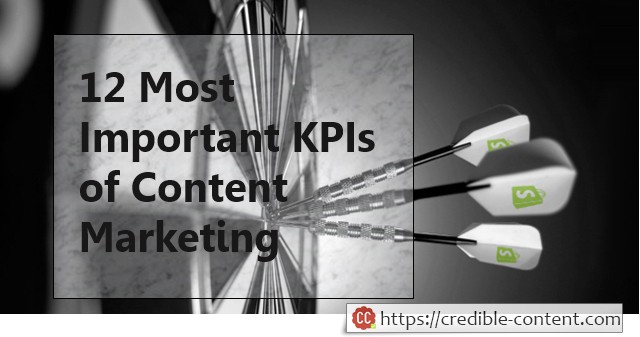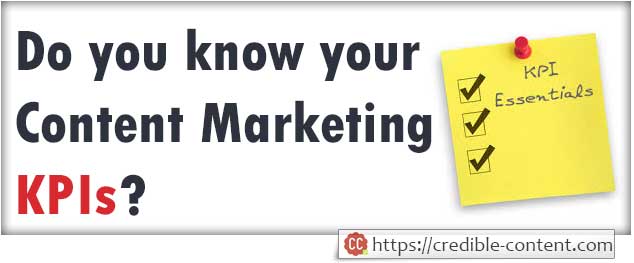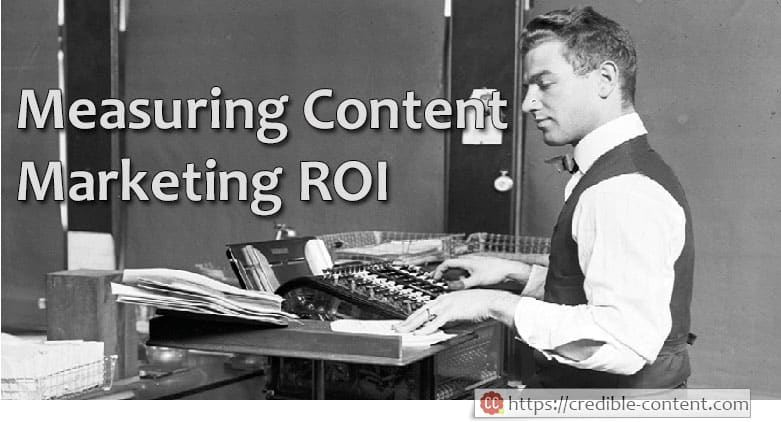A few days ago I wrote about the importance of knowing your content marketing KPIs. In that blog post I briefly wrote about the main KPIs that you should be aware of while creating and publishing content for your website and blog, but a dedicated blog post was needed, and hence this one.
In order to know and analyse your KPIs and make improvements accordingly you should know a mix of web analytics (something like Google Analytics) and some natural instinct about what’s good and what’s bad for your business. For example, you should know that your website needs to convert well and in order to convert well, it has to offer something highly valuable to your visitors. You know that, right?
The basic idea behind gauging the success of your content marketing effort in terms of knowing the KPIs is to keep yourself and your team thoroughly focused. After all, when you are making so much effort, when you are spending so much money, you should know whether your content marketing is succeeding or not, and the best way to know this is, to be aware of what factors indicate to you whether you are experiencing success or failure.
12 important KPIs of content marketing
- Increase in the number of unique visitors: An increase in the number of unique visitors means more people are able to find your content. A big reason why more people are finding your content is that there is more content to be found. Whereas, the possibility of people becoming your customers and clients is greater among your repeat visitors, the number of your repeat visitors will increase only when you have more unique visitors – after all, every existing visitor was once a unique visitor. The content marketing KPI for unique visitors may differ from action to action. For example, unique visitors subscribing to your newsletter or downloading your e-book are far more important in terms of KPIs than those who simply come to your website and then leave without doing anything.
- Increase in the social media and social networking shares: Vibrant activities on social media and social networking websites are a great part of your overall content marketing effort. Only exciting, useful content is shared and promoted voluntarily on these channels. Nobody would like to put boring content on his or her timeline. If people are sharing your content with their friends, family and colleagues, it means they find your content useful.
- Improvement in search engine rankings for important keywords: Content marketing also involves writing and publishing high quality content on your website and if you are persistent with quality and relevance, your search engine rankings for your important keywords begin to improve. It is an important KPI because the improvement in your search engine rankings doesn’t just reflect the quality of content on your own website, it also reflects the popularity of your content on social media and social networking websites, blogs and other websites.
- Increase in the number of newsletter subscriptions:
Are more and more people subscribing to your newsletter and regular updates? This is a very good indicator of your key performance. When people subscribe to your newsletter it means that they are convinced that you are going to deliver quality. It also means that your content marketing is bringing targeted and focused visitors on your website, visitors who are actually interested in hearing from you on an ongoing basis rather than just stumbling upon your website mistakenly. - Increase in the number of people downloading your e-book or case study: For some businesses, an increase in the number of people downloading a particular e-book or a case study is one of the most important content marketing KPIs, because this is what they are targeting for. Content is created, published and disseminated in such a manner that it convinces people into downloading the e-book or the case study. Do you need to create special content for that? Certainly yes.
- Increase in the number of people clicking your ads: If your website or blog revenue depends on more and more people clicking the ads that you have published on your blog or website, then more people clicking your ads is your most important KPI. It means getting highly targeted people to your blog or website – people who find the ads interesting and useful.
- Increase in the number of incoming links to your website or blog: This is an obvious KPI. If more people are linking to your website or blog, it means that they find your content useful and relevant. How is it an important content marketing KPI? More incoming links means more direct traffic to your website without having to depend on the whims of search engines. Although many SEO experts deny this, incoming links still contribute towards improving your overall search engine rankings.
- Increase in the number of people requesting guest blog posting on your blog: Nobody wants to waste time guest blogging for a blog not visited by many people. If your content marketing efforts are increasing the popularity of your blog this is an important key performance indicator. A popular blog means more people want to make use of it by writing content for it and then getting attributed for it.
- Increase in the number of people submitting your contact form: This is quite obvious. Why do people submit your contact form? They want to reach out to you, whether it is for business queries, for lead generation, or simply to send their suggestions and greetings. Whatever, it means your content marketing effort is getting the right people to your website or blog.
- Better response to your email campaigns: I have often written on my blog and website that email marketing is an important component of content marketing and its success and failure can give you a deep perspective of your KPIs. Content marketing doesn’t just mean publishing content on your website or blog and then distributing that content using various channels, it also means broadcasting your email newsletter at regular intervals and distributing your content via email marketing. When people begin to respond to your email marketing campaigns it means they appreciate your content and have faith in what you have to say.
- A greater number of people spending more time on your website or blog: When do people spend more time on your website? One, they find what they are looking for, and two, they find more of what they are looking for. Having valuable content means people are not distracted away easily and there is enough compelling content to keep them on your website. The more they stay on your website, the more inclined they are to do business with you. One of the best KPIs of content marketing is reducing your bounce rate.
- Decrease in the overall customer acquisition cost: Running a business also means accruing costs. Whether you are able to calculate or not, for every new customer in one way or another you are paying money. You are paying for your content. You are paying for your search engine rankings. If you are investing in a PPC campaign, you are also paying per click. When, by spending same amount of money, you are getting more customers and clients, you are reducing your customer acquisition cost and this is the ultimate KPI if you are able to achieve this by the strength of your content marketing.
I have listed above 12 most important KPIs of content marketing according to my own perception and your business may have totally different KPIs. It doesn’t really matter. What matters is, you know what you want your content marketing to achieve for you, and you know how to streamline your content marketing accordingly. This is the most important thing.



